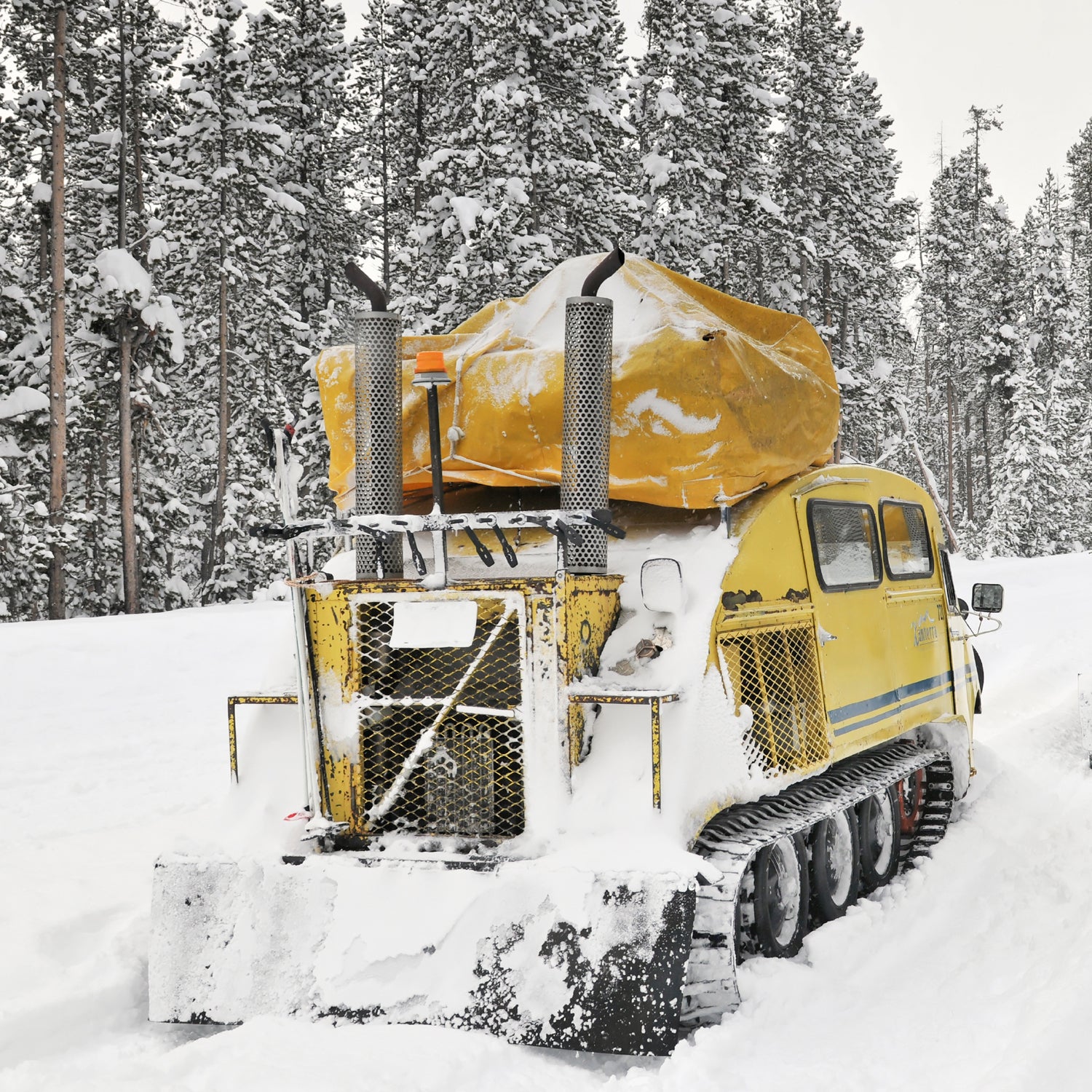You can now own one of the world’s most bizarre and��iconic over-snow vehicles. And while the Transformer-esque��Bombardier��snowcoaches��get appalling gas mileage, are noisier than a wood chipper munching shrapnel, and cost a fortune to maintain,��they have skis for wheels, beastly V-8 engines that will annoy the hell out of your neighbors, and a vintage-cool��factor.��What’s not to love?��
Next year,��Yellowstone National Park will implement tougher noise and fuel-efficiency standards. So it’s auctioning off the��majority of . The first batch sold out��quickly—with prices ranging from $10,000 to more than $12,000—and a second round is slated to��hit the soon.��
Introduced in the winter of 1954–55, the��Bombardiers��were made by a now-defunct French Canadian company.��“They’re a joy to drive and a wonder to see,” says Leslie Quinn, an interpretive specialist with Xanterra. Thirty-six years ago, Quinn started his career driving the Bombardiers. In those days, the vehicles didn’t have governors to regulate speed. “That first year, I got one up to 58 miles per hour. The Dodge V-8 engine was at almost 6,000 rotations per minute.” These days, max speed is about 32 miles an hour. (Note: if you buy one, you can take the governor off. Quinn might even offer to help you.)
When the Bombardiers were introduced 62 years ago, they replaced an earlier (and even weirder) snow transportation concept: the snow plane. “Snow planes were essentially an airplane fuselage with the wings cut off and skis attached,” says Lee Whittlesey, park historian for Yellowstone National Park. The Bombardiers,��which get a whopping 3.5 miles per gallon on a good day,��were more affordable and made winter access to�� easier.
Still, they didn’t exactly open the floodgates.��Yellowstone National Park gets only��5 percent of its annual visitors during the cold months. That means only a tiny fraction of lucky Americans have ever ridden in a Bombardier, and after this year’s snow melts, getting a lift in one will be even harder.��
But it won’t be impossible. One concessionaire, , has several Bombardiers retrofitted to meet the park’s new standards. It will continue using them to make��trips through the park. The only difference: the��vehicles are painted red, not yellow, in a throwback to the original stagecoach days. Yellowstone also plans to keep at least one Bombardier for its archives,��although it won’t be in driving��condition. ��
Xanterra plans to��replace the Bombardiers with buses outfitted with��giant, balloon-like tires. “They’re quiet, more fuel efficient, and more comfortable because you face forward,” says Quinn. (The Bombardier seats were U-shaped and faced backwards.) They’re also boring and soulless, and,��for the man who��spent the past 30��years driving the beastly vehicles, the transition is bittersweet. “I asked one of the drivers today if I could take [a snowcoach]��to breakfast. It probably wasn’t even a mile, but I wanted to drive it one last time,” he says.
Quinn won’t bid on the government auction, citing the high cost of maintenance, but he has advice for whomever does snag one: “Steer early and often.”


